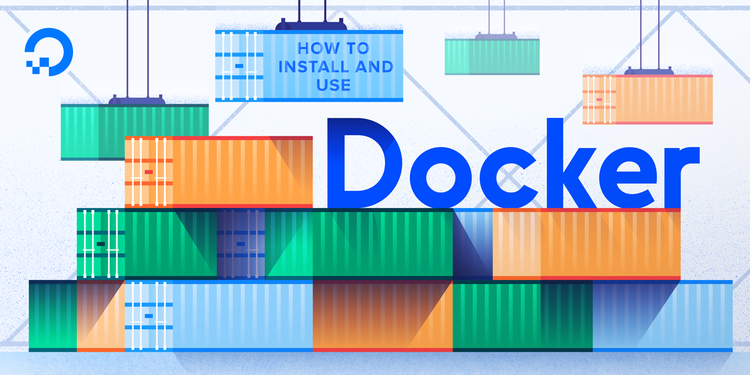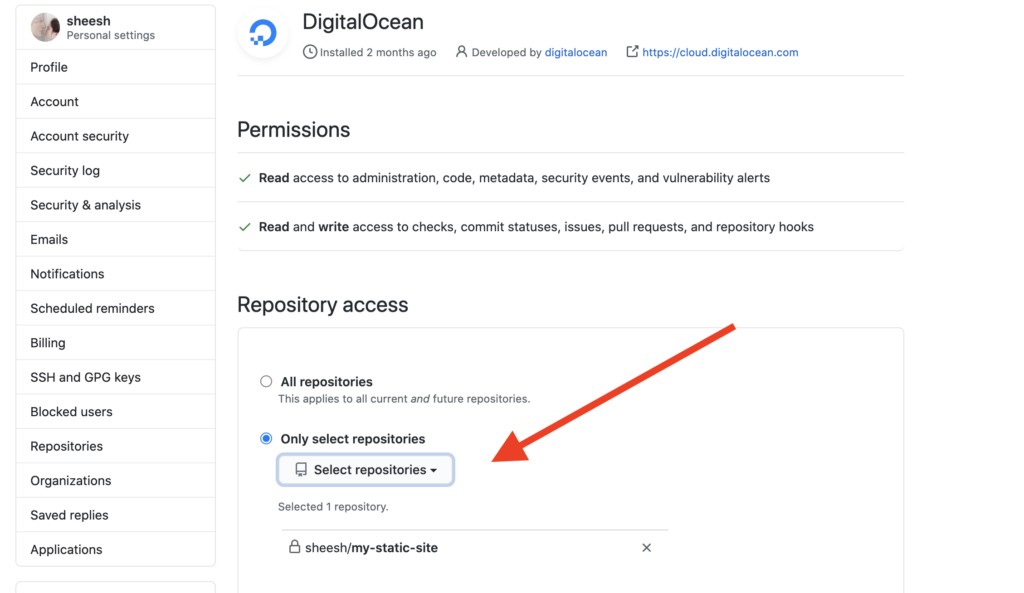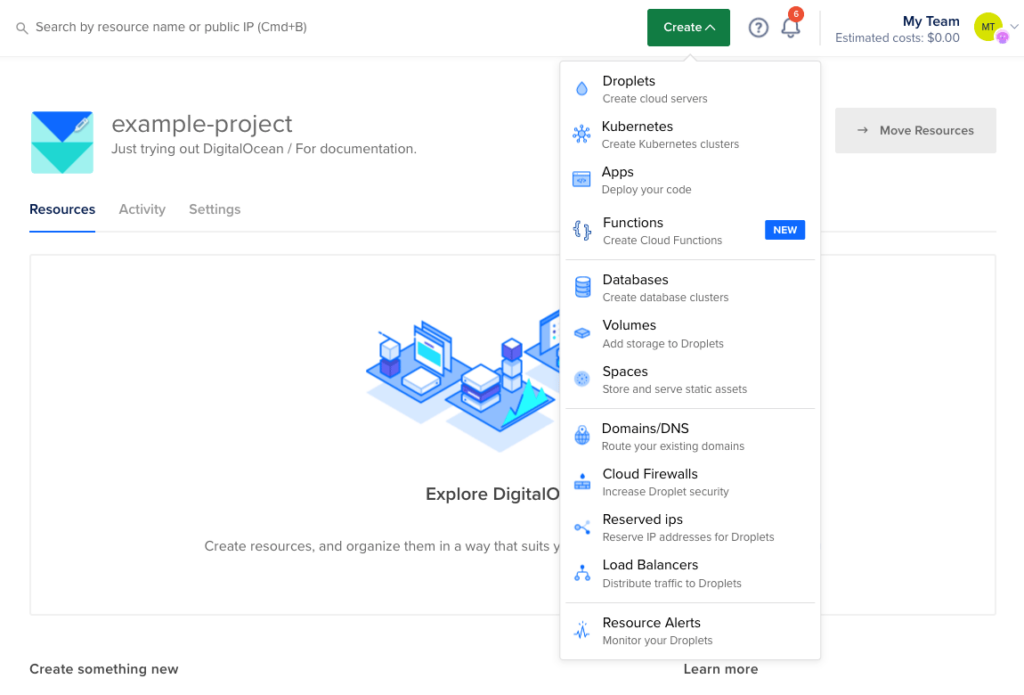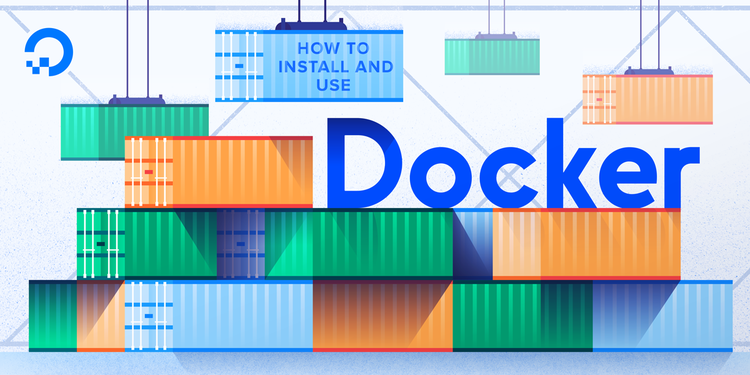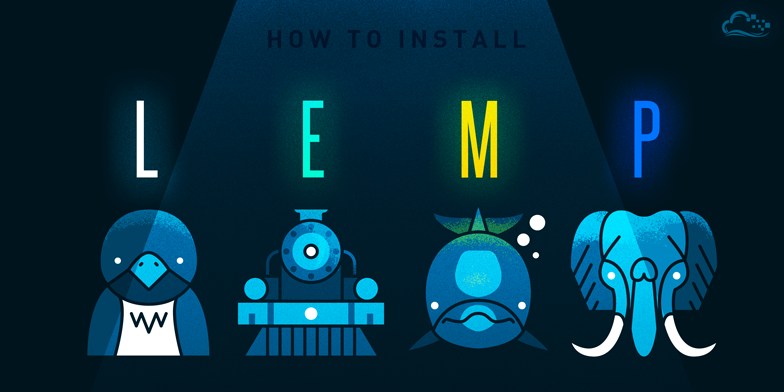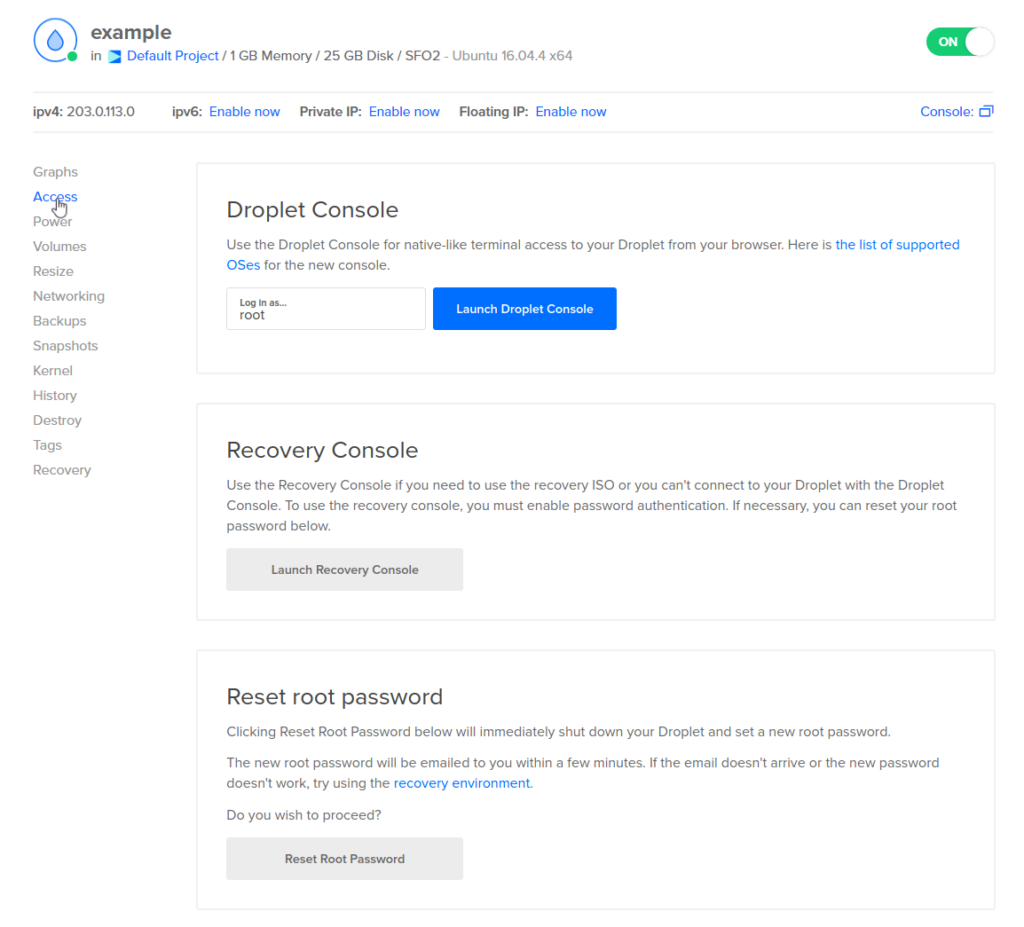To deploy a Docker container to DigitalOcean, you can use the DigitalOcean Kubernetes (DOKS) service. With DOKS, you can easily manage and scale your containerized applications on DigitalOcean’s infrastructure.
DigitalOcean is a popular cloud computing platform that provides developers with the tools they need to deploy and scale applications. Docker, on the other hand, is an open-source platform that allows developers to automate the deployment and management of applications within containers.
By combining these two powerful technologies, you can easily deploy Docker containers to DigitalOcean and take advantage of the scalability and reliability offered by the platform. In this blog post, we will explore the steps required to deploy a Docker container to DigitalOcean using the DigitalOcean Kubernetes service. So, let’s get started!
Introduction To Docker Deployment
Learn how to deploy a Docker container to DigitalOcean with our step-by-step guide. This introduction to Docker deployment simplifies the process, making it easy to get started with hosting your containers on DigitalOcean.
Why Docker?
Docker simplifies software development and deployment.Benefits Of Cloud Deployment
Cloud deployment offers scalability, flexibility, and cost-efficiency. Docker deployment streamlines software packaging and distribution. It provides a consistent environment for applications. Docker containers are lightweight, portable, and easy to manage. Developers can build, test, and deploy applications efficiently. Docker simplifies the process of managing dependencies and configurations. It enhances collaboration among development teams. Docker enables faster deployment and scalability of applications. Overall, Docker revolutionizes the way software is developed and deployed.Prerequisites For Docker Deployment
To deploy a Docker container to DigitalOcean, there are a few prerequisites that need to be in place. Firstly, you need to have a DigitalOcean account and a Droplet that meets the Docker requirements. Secondly, you need to have Docker installed on your local machine and the Droplet.
Finally, you need to have some basic knowledge of Docker commands and how to deploy a Docker container.
Setting Up A Digitalocean Account
To deploy Docker containers to DigitalOcean, you need to have a DigitalOcean account. If you don’t have one yet, you can sign up for a new account on the DigitalOcean website. Once you have an account, you can create a new Droplet, which is a virtual machine that you can use to host your Docker containers.Installing Docker On Your Machine
Before you can deploy Docker containers to DigitalOcean, you need to have Docker installed on your local machine. To install Docker, you can follow the instructions on the Docker website. Once you have Docker installed, you can start building your Docker images and testing them locally before deploying them to DigitalOcean.Configuring Your Digitalocean Droplet
Once you have your DigitalOcean account set up and Docker installed on your machine, you need to configure your Droplet to run Docker containers. You can do this by following the steps outlined in the DigitalOcean documentation.Creating Your Docker Image
Before you can deploy your Docker containers to DigitalOcean, you need to create a Docker image that contains your application and all of its dependencies. You can do this by creating a Dockerfile that defines the steps needed to build your image. Once you have your Docker image built, you can push it to a Docker registry, such as Docker Hub or the DigitalOcean Container Registry.Deploying Your Docker Container
Once you have your Docker image built and pushed to a registry, you can deploy your Docker container to DigitalOcean using Docker Compose or Kubernetes. Docker Compose is a tool for defining and running multi-container Docker applications, while Kubernetes is a container orchestration platform for managing containerized applications. By following these prerequisites, you can deploy your Docker containers to DigitalOcean with ease. Whether you’re deploying a simple web application or a complex microservices architecture, Docker and DigitalOcean make it easy to get your applications up and running in the cloud.Creating A Dockerfile
Creating a Dockerfile is an essential step in deploying a Docker container to DigitalOcean. A Dockerfile is a text file that contains instructions for building a Docker image. In this section, we will explore the basics of Dockerfile syntax and best practices for creating an efficient and effective Dockerfile.
Basics Of Dockerfile Syntax
When creating a Dockerfile, it is crucial to understand the basic syntax that it follows. Each instruction in the Dockerfile creates a new layer in the image, and the order of the instructions matters. Here are some key elements of the Dockerfile syntax:
- FROM: Specifies the base image for the container
- RUN: Executes commands within the container
- COPY: Adds files from the host machine to the container
- WORKDIR: Sets the working directory for subsequent instructions
- EXPOSE: Informs Docker that the container listens on specific network ports at runtime
- CMD: Provides defaults for an executing container
Best Practices For Dockerfile Creation
Creating an efficient and well-structured Dockerfile is crucial for optimizing the build process and minimizing the image size. To achieve this, consider the following best practices:
- Use Minimal Base Images: Start with the smallest, most secure base image that meets your application’s requirements.
- Combine Commands: Minimize the number of layers by combining commands wherever possible.
- Use .dockerignore: Exclude unnecessary files and directories from the build context to reduce image size.
- Keep Layers Order in Mind: Place frequently changing instructions at the bottom of the Dockerfile to leverage Docker’s layer caching.
- Remove Unnecessary Dependencies: Clean up dependencies and temporary files to reduce the image size.
Building Your Docker Image
Before deploying your Docker container to DigitalOcean, you need to build your Docker image. This process involves creating a snapshot of your application and its dependencies, which can be used to create a container that runs your application.
Using Docker Build Command
The first step in building your Docker image is to use the Docker build command. This command reads the instructions in your Dockerfile and builds a Docker image based on those instructions. The Dockerfile is a text file that contains all the commands needed to build your Docker image.
To use the Docker build command, navigate to the directory that contains your Dockerfile and run the following command:
docker build -t . The -t flag is used to tag your Docker image with a name and version number. The period at the end of the command tells Docker to look for the Dockerfile in the current directory.
Verifying The Build Process
After running the Docker build command, you can verify that the build process was successful by running the following command:
docker imagesThis command will display a list of all the Docker images that are currently on your system. Look for the image that you just built and verify that it is listed with the correct name and version number.
Now that you have built your Docker image, you are ready to deploy it to DigitalOcean. In the next section, we will cover how to push your Docker image to the DigitalOcean Container Registry.
Working With Docker Registries
To deploy a Docker container to DigitalOcean, you can utilize Docker registries for efficient management. By pushing your Docker image to a registry, you can easily pull it onto your DigitalOcean droplet for seamless deployment. This streamlined process ensures smooth container deployment across platforms.
When it comes to deploying Docker containers to DigitalOcean, understanding how to work with Docker Registries is essential. Docker Registries are repositories that store and distribute Docker images. These images serve as the building blocks for containers, making it easier to manage and deploy applications. In this section, we will explore two popular options for working with Docker Registries: pushing images to Docker Hub and using DigitalOcean’s Container Registry.
Pushing Images To Docker Hub
Pushing your Docker images to Docker Hub allows you to easily share and distribute your containers with others. Docker Hub is a cloud-based registry service that hosts public and private Docker images. Here’s how you can push your Docker image to Docker Hub:
- Create a Docker Hub account if you haven’t already.
- Tag your local Docker image with your Docker Hub username and the repository name.
- Login to Docker Hub using the Docker CLI.
- Push your Docker image to Docker Hub using the “docker push” command.
By following these steps, you can make your Docker image available for others to use and deploy in their own environments. It’s important to note that Docker Hub offers both free and paid plans, allowing you to choose the option that best suits your needs.
Using Digitalocean’s Container Registry
DigitalOcean’s Container Registry is an alternative to Docker Hub, providing a secure and private location to store your Docker images. Here’s how you can use DigitalOcean’s Container Registry:
- Create a DigitalOcean account if you don’t already have one.
- Install and configure the DigitalOcean CLI on your local machine.
- Build your Docker image and tag it with the appropriate registry URL.
- Login to DigitalOcean’s Container Registry using the CLI.
- Push your Docker image to the Container Registry using the “doctl registry” command.
With DigitalOcean’s Container Registry, you can securely store your Docker images and easily deploy them to your DigitalOcean Droplets. This allows for seamless integration with other DigitalOcean services, making it a convenient choice for hosting your containers.
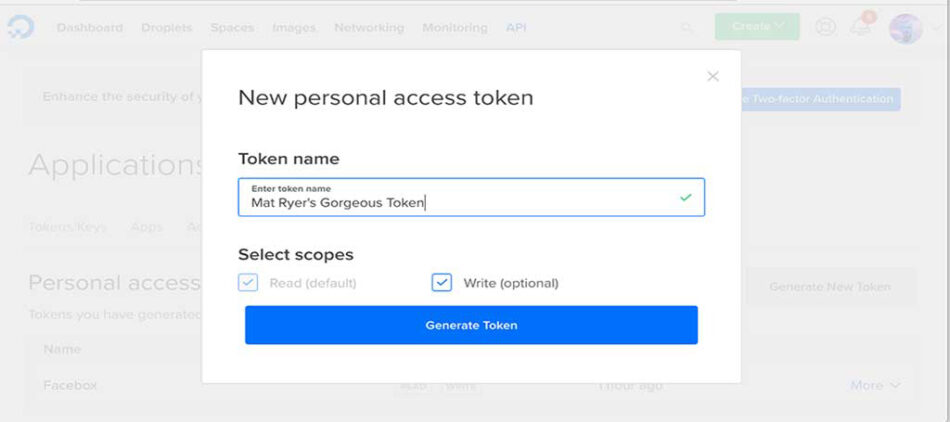
Credit: www.veritone.com
Setting Up Digitalocean Droplet
Deploying a Docker container to DigitalOcean starts with setting up a DigitalOcean droplet. This process involves selecting the right droplet size and configuring it to run Docker effectively. Let’s walk through the essential steps to ensure a smooth deployment.
Choosing The Right Droplet Size
When setting up a DigitalOcean droplet for Docker deployment, it’s crucial to select the appropriate droplet size. Consider the resource requirements of your Docker containers, such as CPU and memory, to ensure optimal performance.
You can refer to the following table for a general guideline on choosing the right droplet size:
| Size | Memory | CPUs | SSD Disk | Price |
|---|---|---|---|---|
| Standard | 1 GB | 1 vCPU | 25 GB | $5/mo |
| Performance | 16 GB | 6 vCPUs | 320 GB | $80/mo |
Configuring The Droplet For Docker
After selecting the appropriate droplet size, the next step is to configure the droplet for Docker. This involves installing Docker on the droplet and setting up the necessary environment to run Docker containers efficiently.
Here’s a simplified guide for configuring the droplet for Docker:
- Update the system packages using the package manager.
- Install Docker using the official installation script.
- Create a new user and add it to the “docker” group for security purposes.
- Configure Docker to start on boot and enable the Docker service.
By following these steps, you can effectively configure the DigitalOcean droplet to run Docker and prepare it for deploying containers.
Deploying Your Container
Learn how to deploy your Docker container to DigitalOcean effortlessly. This step-by-step guide will walk you through the process, ensuring a seamless and hassle-free deployment experience.
Transferring Images To Droplet
Use the following command to transfer Docker image to your DigitalOcean Droplet:
docker save image_name > image_name.tarRunning Containers On The Droplet
Execute the command to run the container on your Droplet:
docker load < image_name.tar
Managing Deployed Containers
To deploy a Docker container to DigitalOcean, first, ensure you have a DigitalOcean account and Docker installed. Then, use the DigitalOcean Control Panel or Command Line to create a Droplet, SSH into it, and install Docker. Finally, pull the Docker image from the repository and run it on the Droplet.
Monitoring Container Performance
Check container performance regularly to ensure efficiency.
Updating Containers
Keep containers up-to-date to enhance security and functionality.
Security Considerations
Deploying a Docker container to DigitalOcean requires careful consideration of security measures. Ensure proper access controls, use secure images, and regularly update the container to protect against vulnerabilities. Safeguarding your container environment is crucial for a secure deployment.
Securing The Docker Environment
Keep Docker software updated to prevent vulnerabilities.
Regularly scan for security threats using trusted tools.
Implementing Docker Networking Best Practices
- Isolate containers using Docker networks.
- Restrict network access to essential services only.

Credit: docs.digitalocean.com
Troubleshooting Common Issues
Deploying a Docker container to DigitalOcean can sometimes encounter common troubleshooting issues. This guide provides easy-to-understand solutions to help you overcome any challenges and successfully deploy your container without complications.
Dealing With Deployment Errors
When deploying a Docker container on DigitalOcean, errors can occur. Common solutions include:
- Ensure correct container image is used.
- Check network connectivity and firewall settings.
- Verify resource availability on the host.
Container Debugging Techniques
Debugging containers can be challenging. Some effective techniques are:
- Inspect container logs for errors.
- Utilize Docker exec to access running containers.
- Check container status using Docker ps command.
Additionally, using Docker’s built-in debugging tools can help identify and resolve issues efficiently.
Scaling Your Docker Deployment
Scaling your Docker deployment is crucial for managing increasing traffic and ensuring high availability. In this section, we’ll explore how to scale your Docker deployment on DigitalOcean, using their Kubernetes service, load balancing, and horizontal scaling.
Using Digitalocean’s Kubernetes Service
DigitalOcean provides a managed Kubernetes service that simplifies the process of deploying, managing, and scaling containerized applications using Kubernetes. By leveraging this service, you can easily orchestrate and scale your Docker containers without the need to manage the underlying infrastructure.
Load Balancing And Horizontal Scaling
Load balancing is essential for distributing incoming traffic across multiple instances of your application, ensuring optimal performance and preventing any single server from becoming a bottleneck. With DigitalOcean’s load balancer, you can easily achieve this by distributing traffic across your Docker containers.

Credit: www.digitalocean.com
Backup And Recovery Strategies
Deploying a Docker container to DigitalOcean involves implementing backup and recovery strategies. By utilizing tools like Docker Compose and DigitalOcean Spaces, you can ensure the seamless deployment and recovery of your containerized applications. This approach offers reliability and security for your infrastructure.
When it comes to deploying Docker containers to DigitalOcean, it’s essential to have a solid backup and recovery strategy in place. This ensures that your data and applications are protected in case of any unforeseen incidents or disasters. In this section, we will explore two important aspects of backup and recovery: creating container backups and disaster recovery planning.
Creating Container Backups
In order to safeguard your Docker containers, it is crucial to regularly create backups. These backups serve as a safety net, allowing you to restore your containers to a previous state if necessary. To create container backups:
- Identify the containers that need to be backed up. Determine the criticality of each container and prioritize accordingly.
- Establish a backup schedule. Decide how frequently you want to create backups and ensure it aligns with your data update frequency and business needs.
- Select a backup method. There are multiple options available, such as using Docker commands, third-party tools, or even scripting your own backup solution.
- Store your backups securely. Choose a reliable storage solution, preferably one that provides encryption and redundancy, to protect your backups from data loss or unauthorized access.
- Regularly test your backups. Ensure that you can successfully restore your containers from the backups and validate the integrity of the data.
Disaster Recovery Planning
Disaster recovery planning involves preparing for and mitigating the impact of potential disasters or system failures. This ensures that your Docker containers can be quickly restored and your applications can resume normal operation. Here are some key steps to consider:
- Identify potential risks. Assess the possible scenarios that could lead to a disaster, such as hardware failures, network outages, or security breaches.
- Define recovery objectives. Determine the acceptable downtime and data loss limits for each container, considering the criticality of your applications.
- Create a recovery plan. Document the step-by-step procedures to follow in case of a disaster, including the order in which containers should be restored.
- Test your recovery plan. Regularly simulate disaster scenarios and practice the recovery process to ensure its effectiveness and identify any potential issues.
- Monitor and update your plan. Continuously monitor your infrastructure and update your recovery plan as your environment evolves or new risks emerge.
By implementing robust backup and recovery strategies, you can safeguard your Docker containers and ensure business continuity in the face of unexpected events. Remember to regularly review and refine your strategies to adapt to changing requirements and technology advancements.
Conclusion And Next Steps
Deploying a Docker container to DigitalOcean is a straightforward process. Follow these steps to ensure a smooth deployment and take your application to the next level.
Summarizing The Deployment Journey
Congratulations! You have successfully deployed your Docker container to DigitalOcean. By following the steps outlined in this guide, you have gained a solid understanding of how to create and manage Docker containers, as well as how to deploy them to a cloud provider. Throughout the deployment journey, you have learned how to set up a new DigitalOcean droplet, install Docker, create a Docker image, and deploy it to DigitalOcean. You have also explored how to configure the firewall, set up a domain name, and secure your application with HTTPS. Now that you have completed the basic deployment, it’s time to explore more advanced Docker features.Exploring Advanced Docker Features
Docker is a powerful tool that can be used for much more than just deploying simple applications. With Docker, you can orchestrate complex multi-container applications, automate testing and deployment, and manage large-scale infrastructure. Some of the advanced Docker features that you may want to explore include:- Docker Compose: A tool for defining and running multi-container Docker applications
- Docker Swarm: A container orchestration platform for managing large-scale Docker deployments
- Docker Registry: A central repository for storing and sharing Docker images
- Docker Security: A set of tools and best practices for securing Docker containers and images
Frequently Asked Questions
How Do I Upload A Docker Image To Digitalocean?
To upload a Docker image to DigitalOcean, first, tag the image. Then, log in to your DigitalOcean account. Next, push the image to DigitalOcean Container Registry using the command provided.
How To Deploy Docker Containers To The Cloud?
To deploy docker containers to the cloud, follow these steps: 1. Choose a cloud provider that supports Docker, such as AWS or Azure. 2. Create a Docker image of your application. 3. Push the image to a container registry. 4.
Use a container orchestration tool, like Kubernetes or Docker Swarm, to deploy the containers to the cloud. 5. Monitor and manage the containers as needed.
How To Deploy Docker Compose To Digitalocean?
To deploy Docker Compose to DigitalOcean, use the DigitalOcean Container Registry and DigitalOcean Kubernetes. First, create a DigitalOcean account and set up a Kubernetes cluster. Then, configure the Docker Compose file for the deployment, and use kubectl to apply the configuration to the Kubernetes cluster.
Does Digitalocean Support Docker?
Yes, DigitalOcean supports Docker. With DigitalOcean’s flexible infrastructure and easy-to-use control panel, you can easily deploy and manage your Docker applications. Their platform provides a seamless integration with Docker, making it simple to get started.
Conclusion
Deploying Docker containers to DigitalOcean is a powerful way to streamline your application management. By following the steps outlined in this guide, you can take advantage of the flexibility and scalability that Docker and DigitalOcean offer. Embracing this technology can help you optimize your development process and enhance your overall productivity.

